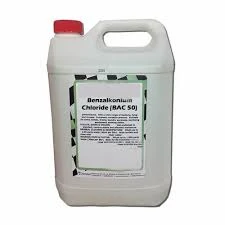polyacrylamide polymer
Polyacrylamide Polymer Properties, Applications, and Future Perspectives
Polyacrylamide (PAM) is a versatile synthetic polymer that has garnered significant attention due to its unique properties and diverse applications. Composed of acrylamide monomers, PAM has a high molecular weight and can exist in various forms including anionic, cationic, and nonionic variants. The distinct characteristics of polyacrylamide make it suitable for numerous industrial and research applications across various sectors.
One of the most notable properties of polyacrylamide is its ability to absorb and retain large amounts of water. This hydrophilic nature allows PAM to form hydrogels, which can swell significantly in the presence of water. The high water retention capacity makes polyacrylamide polymers particularly useful in agriculture, where they are employed as soil conditioners. By improving soil structure and water retention, PAM enhances crop yields and contributes to sustainable agricultural practices, especially in arid regions.
In addition to agricultural applications, polyacrylamide is extensively used in the field of water treatment. Due to its flocculating properties, PAM aids in the removal of suspended particles and impurities from wastewater. It works by aggregating fine particles, which then can be easily separated from water, thus enhancing the efficiency of water purification processes. This utility is particularly critical in the management of industrial effluents, where the clarification of waste streams is necessary to meet environmental regulations.
polyacrylamide polymer

Moreover, polyacrylamide finds applications in the oil and gas industry. It is used in enhanced oil recovery (EOR) techniques to increase the extraction of oil from reservoirs. PAM helps to modify the viscosity of water, allowing for more effective displacement of oil during the extraction process. This application not only boosts oil recovery rates but also promotes resource efficiency in energy production.
Polyacrylamide polymers are also crucial in biomedical research. Their biocompatibility and ability to form hydrogels allow for their use in drug delivery systems and tissue engineering. PAM can be engineered to release therapeutic agents in a controlled manner, making it an attractive option for targeted therapies.
While the applications of polyacrylamide are vast, it is essential to acknowledge the potential environmental concerns associated with its use. The acrylamide monomer is classified as a neurotoxin and a potential carcinogen, raising safety considerations in its production and application. Therefore, researchers are increasingly focused on developing safer formulations and exploring biodegradable alternatives to PAM.
In conclusion, polyacrylamide polymer is a significant material with diverse applications spanning agriculture, water treatment, oil recovery, and biomedical fields. Its unique properties, such as high water retention and flocculating ability, make it an invaluable resource in various industries. However, ongoing research is necessary to address safety and environmental issues, ensuring the sustainable use of polyacrylamide in the future. As scientists continue to innovate, the potential of PAM is bound to expand, offering new solutions to some of the world's pressing challenges.
-
Pbtc Scale InhibitorPBTC: A Scale Protector for Industrial Water TreatmentNewsAug.05,2025
-
Organic Phosphonate: An Efficient Defender in the Field of Scale InhibitionNewsAug.05,2025
-
Hydrolyzed Polymaleic Anhydride: Green Pioneer in Scale Inhibition FieldNewsAug.05,2025
-
PAPEMP Polyamino Polyether Methylene Phosphonic Acid For SaleNewsAug.05,2025
-
Flocculant Water Treatment: A Pioneer in Purification in the Field of Water TreatmentNewsAug.05,2025
-
Benzyl Isothiazolinone: An Efficient and Broad-Spectrum Antibacterial Protective GuardNewsAug.05,2025





